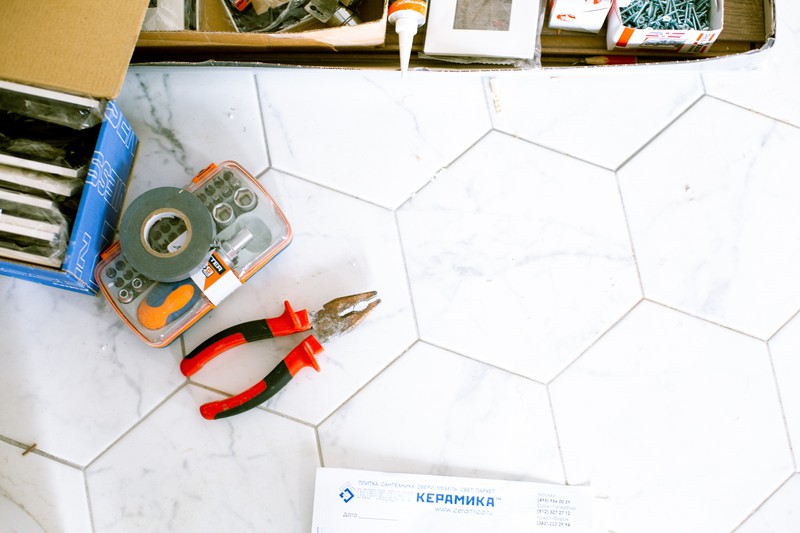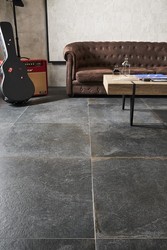3 Important things to keep in mind when laying a porcelain floor
If you are looking for a tutorial that tells you the steps to lay a porcelain floor, this post is not what you are looking for. Nor will you learn new installation techniques here if you are an installer.
This article is dedicated more to the individual, so that you have some basic notions about how to install a floor. And it is that we still find ourselves with some doubts, that the individual does not have to know, but that can lead to problems in his reform.
And although it seems obvious to many, it continues to be the day to day of our sector.
WOODEN FLOORS ARE PLACED INTERLOCKED TO A MAXIMUM OF 25%
This rule is basic for all tiles that are elongated, which what happens is that imitations of wood are the ones that are usually placed interlocked, without respecting the lines of the joints.
Formerly one of the techniques used by commercials to see if a tile was of good quality, was to see if it was bent. What happens is that in the past the longest size of the tiles was 40 or 50 cm.
Now it is very common to put pieces of 90cm, 120cm or 150cm on the floor of the house. This has led to all these pieces being bent. The center of the tile is higher than the ends.
Although this may seem like a manufacturing fault, it is more a characteristic of the ceramic. When the tiles are removed from the oven, during the drying process, the tips fall slightly due to their own weight.
For this reason, it is not recommended, IT IS ESSENTIAL, that this type of floor is placed interlocked, at a maximum of 25% of the piece next to it. This way we will avoid what we call "eyebrows", which is that some pieces are a few millimeters higher or lower than others.
Surely we have all seen them and we have suffered them when moving a piece of furniture from place.< /p>
THE ENTIRE SURFACE OF THE TILE HAS TO BE COVERED WITH GLUE CEMENT
We have already commented on this in some post, but it is important to repeat it.
The resistance of an installed floor depends on both the hardness of the floor and its placement.
It is very important that the glue that sticks the porcelain stoneware tile to the floor acts as a support in its entire surface.
We met a lot of people in the store who came with broken pieces, and right away we saw that the cement was sticky on the back. With uncovered sites.
This rule is especially important on floors that are going to support high traffic, or that are going to support the weight of a car. In these cases, of course the resistance of the pavement is important, but it is impossible for it to resist the weight of the car for life if it does not have support to support it.
DO NOT PLACE TILES TOGETHER IF NOT IT IS FROM THE SAME COLLECTION
Sometimes we would like to combine tiles from two different brands. But this should not be done unless they go on different walls and the owner of the house understands and accepts what he is going to buy.
Although the two tiles apparently have the same size, for example 30x90, each factory has its molds and they are never exact measurements. In fact it is rarely an exact measurement. One will be 29.9x89.9... another will be 30.1x90.1 cm... etc.
If we don't follow this advice and place two different collections, it will be a disaster. We will see that the joints will not coincide in any case and it will give the impression that the tile is poorly placed.
This can happen even with the same collection, even with the same tile. That's where the issue of caliber would come in... that's for another post.






Our customers trust us
Opinions of our clients
Receive our news